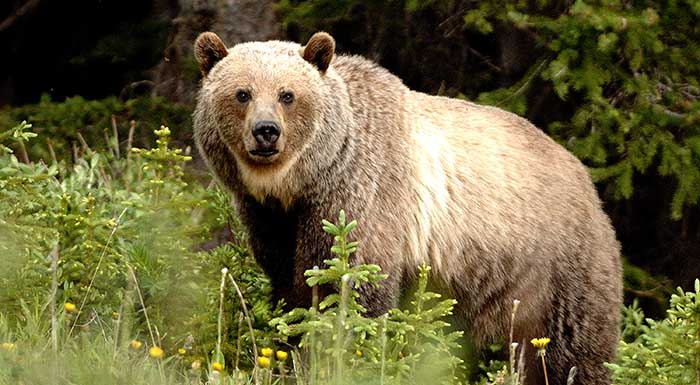
Alberta's grizzly bear population is officially threatened, but Sweden's example shows that humans and bears can coexist within intensely managed forests similar to ours.
Sweden should be known for more than Vikings, Volvo and IKEA (not to mention ABBA, the Skarsgård family and the Nobel Prize): it's also a good model for comparison when looking at how to return grizzly bears in Alberta to a more sustainable population.
Scott Nielsen, a conservation scientist in the Department of Renewable Resources, says that Sweden has historically seen bears (like their Scandinavian brethren, North American grizzlies are also brown bears) as a scourge that need to be eliminated for fear the ursus population would threaten livestock or human populations. After a century of intended persecution, by 1930 the number of bears had declined to only 160 animals in a few scattered locations of Sweden. The country's policy on bears then changed towards protection and nearly a century later their numbers now exceed 3,000 bears.
"What is interesting about the Swedish example is that Alberta seems to be on the same trajectory, albeit many decades later," said Nielsen. "What is even more striking is that Sweden recovered their bears within a landscape of intensely managed forests, which is not all that different from Alberta's boreal forests and foothills."
Nielsen uses this example to demonstrate that with a change of attitude, humans and bears can coexist if you give them a chance.
Currently, Alberta's grizzly bear population is officially threatened and has been under a hunting moratorium by the Alberta government for the last decade. Population size across Alberta is estimated to be approximately 800 animals, although the number of animals within the Yellowhead ecosystem is estimated at only 74 bears.
To address this population paucity, and the larger question of how in managed landscapes bear populations can be sustained and recovered, Nielsen has teamed up with colleagues from across western Canada to create the Grizzly-PAW project: Grizzly Population Assessment in Yellowhead. The Yellowhead ecosystem is the area around Hinton, Alberta, in the foothills east of Jasper National Park.
Each member of the project, which is led by the University of British Columbia, focuses on a specific area of research. "I am looking at the population and habitat ecology of grizzlies with a focus on how changes in disturbance over the past 17 years have influenced grizzly population size and habitat supply," says Nielsen, the Alberta Biodiversity Conservation Chair.
The plan is to develop new tools to manage the population in a way that helps speed recovery, and this requires partnerships with government and industry. The Natural Sciences and Engineering Research Council (NSERC) agrees that this research is important, recently providing $1.4 million in funding to the group. Industry partners include the forestry and energy sectors because, Nielsen says, the work being done to help bears improves the sustainability of industry activities, since their management plans and operational activities need to assess and integrate the needs of grizzlies.
Part of this bottom-up analysis is in recognizing that this omnivorous carnivore faces some specific challenges in the western Canadian environment where he works, says Nielsen. For instance, "bears in our area lack access to salmon, but they do have access to moose, elk, and occasional sheep, as well as a diversity of vegetation and berries.
"They have a wide and adaptable diet, and under the right conditions they have the capacity for tremendous weight gain, but it's dependent on the quality of their habitat," says Nielsen, who has been working on grizzly bears in this area since 2000.
In the geographic area Nielsen conducts his research, reproduction of individual female bears usually only happens every five to seven years, he says, and one approach to managing bears is to "boost habitat quality to improve Alberta's low rates of reproduction, since this is tied to the productivity of the surrounding habitat."
The other side of the equation is managing people. "Until human attitudes completely change, we face the challenge of keeping bears alive to reproduce within areas that see regular human activity and access. One common way of dealing with this is reducing the likelihood of encounters between bears and humans, and that can be partly dealt with by minimizing road developments and gating existing roads in core grizzly bear habitat."
The next steps for Nielsen and his group are to "develop the tools for managing survival and the habitats that promote healthier bears with greater reproductive rates, which is ultimately our engine for recovery".
"This work began in 1999 under Gordon Stenhouse at the Foothills Research Institute, and has become one of the flagship wildlife conservation and research projects in Canada, with a focus on recovering this iconic and charismatic species within a working landscape on the periphery of one of Canada's most iconic national parks."